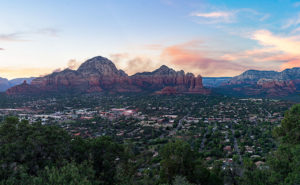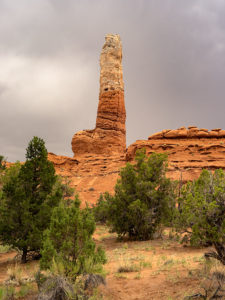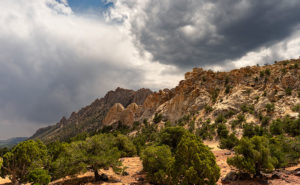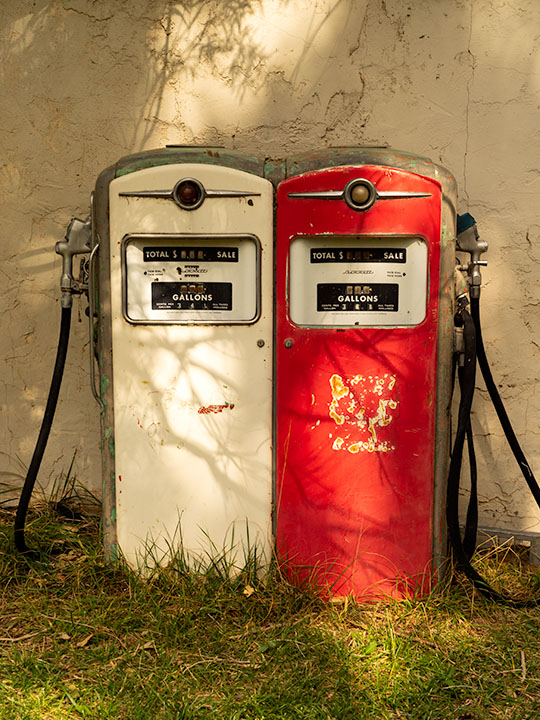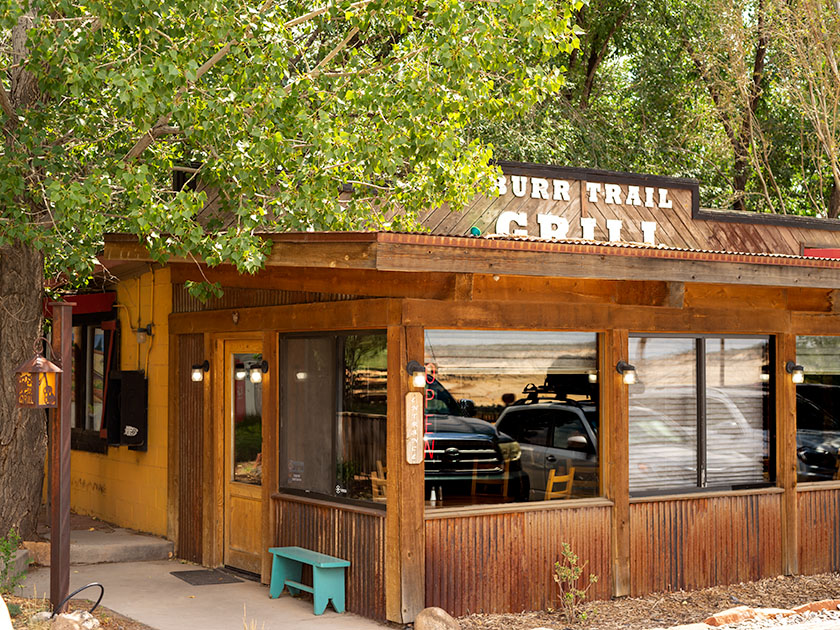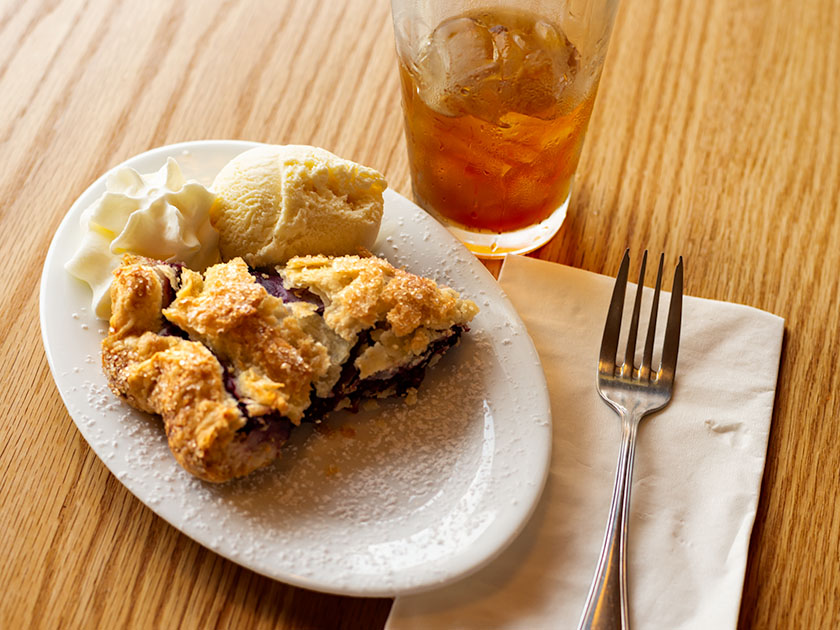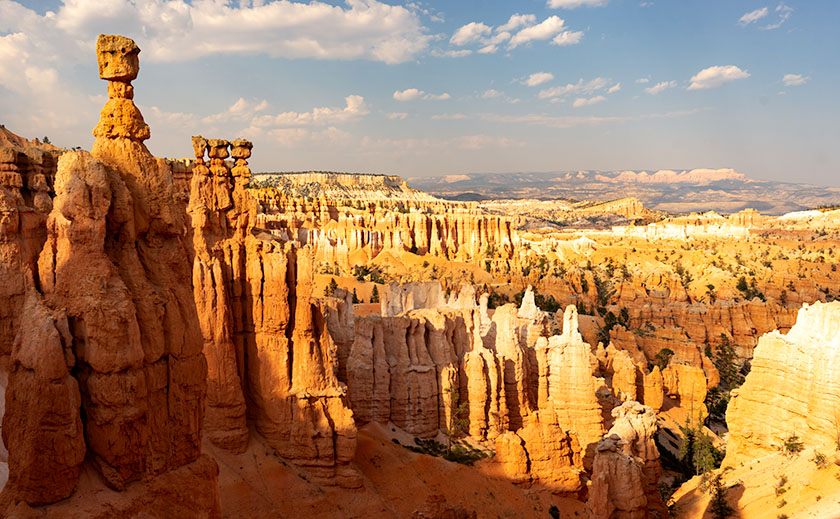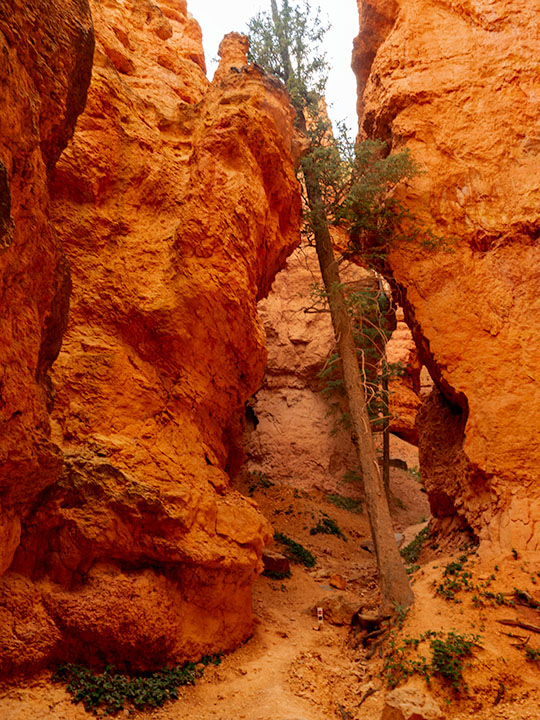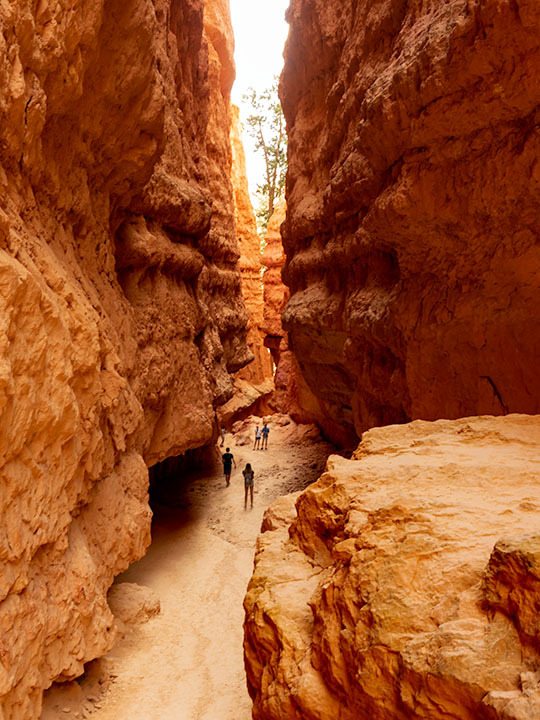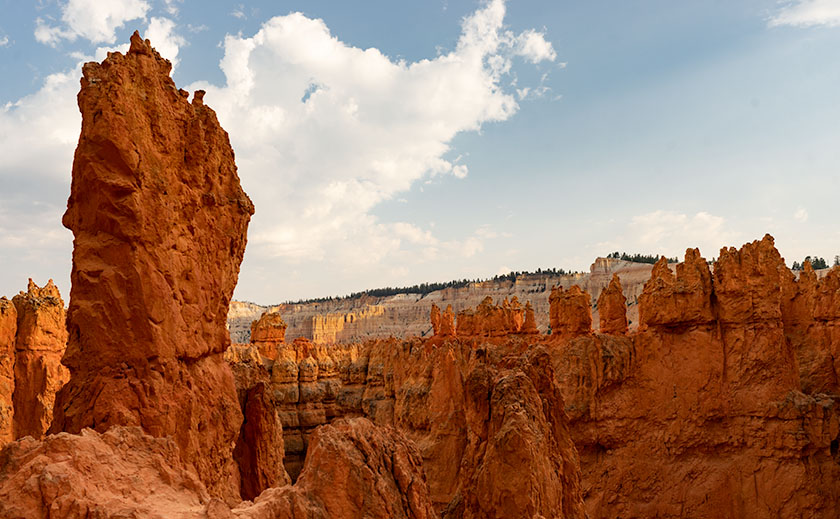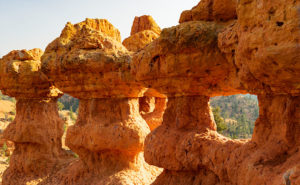This week’s featured image was shot in Boynton Canyon on Sedona’s west side, north of State Route 89A. It’s the site of The Enchantment Resort—a very high-end destination requiring deep pockets to stay there. There are several trails in the canyon that meander among the cliffs and buttes, and that’s exactly what I was searching for. In the parking lot, the map said that I had a choice of three routes: one that went to a dead-end up the canyon, a second longer trail over Dead Man’s Pass, and finally a short hike to a canyon overlook. I’m all for short and I’m adverse to dead men, so I set off for the overlook.
The trail is fishhook-shaped as it skirts the south side of an outcrop then turns 180° and ascends into a saddle, wedged between the outcrop and a larger butte. It’s only a quarter-mile long, but the rise got tricky in a couple of sections. It’s good that it was well-marked with white paint splotches. The climb doesn’t seem much until you reach the saddle and turn around and see the valley floor a couple hundred feet below. To the west is a great view of the resort nestled among the red-rock cliffs.
As I clambered up the hill, I stopped a couple of times to rest and clear the heart beating in my ears. When I could hear again, there were voices, but I couldn’t see anyone on the trail above or behind me. It wasn’t until I reached the saddle that I saw a pair of climbers—a woman and a man tethered together with a rope—as they were nearing the butte’s summit. I assumed that she was leading as she was higher and coaching his assent. “Cool,” I thought.
Once I reached the saddle, I set up my tripod and camera and began shooting all the compass points, and savored the water I remembered to bring. After I completed my long-shots, I started a series of close-ups with the camera hand-held. I could tell from their voices that my climbers had reached the top and were taking in the view.
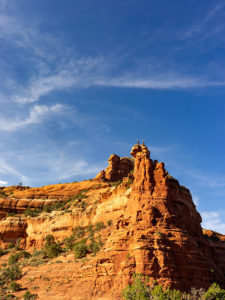
I thought about photographing them while they were enjoying their success, so I yelled up to them, “Hey! Can I get a shot?”
They were so polite. They hunkered down out of sight. “No,” I shouted again, “I want to shoot you on top.” When they stood up, I pantomimed celebration by raising my hands in the air. They followed my instructions and even began whooping. I fired off a couple of frames and shouted “Thanks” to them and then began to make my way back down to the truck.
I like the way the shot Climbers turned out even though they don’t take up a lot of frame space. As an Alaska guide once instructed us, “Humans are easy to spot. They’re the only thing standing erect.” In the image, I wanted to show their difficult conquest so I didn’t bother with a long lens. I also like the way the red sandstone contrasts against the dark blue sky and streaky cloud so I included more of it in the composition.
You can see a larger version of Climbers on its Web Page by clicking here. I hope you enjoy viewing this week’s post and come back next week when we’ll show another featured image from Sedona.
Until next time — jw

